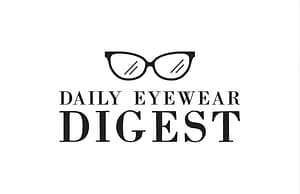Presbyopia 101: Why You Need Reading Glasses and How They Help
Key Points:
– Understanding Presbyopia: Definition and Symptoms
– The Science Behind Presbyopia: Age-related Changes in the Eye
– The Role of Reading Glasses
– Types of Reading Glasses Available
– Choosing the Right Pair: Considerations and What to Look For
– Caring for Your Reading Glasses
– Alternatives to Reading Glasses
Understanding Presbyopia: Definition and Symptoms
Presbyopia, from the Greek words presbys meaning ‘old man’ and ops meaning ‘eye,’ refers to the age-related loss of the eye’s ability to focus on nearby objects. This common condition typically manifests in people over the age of 40 and can be quite a frustrating experience when it first occurs. Symptoms may include difficulty in reading small print, needing to hold reading materials at arm’s length, eye strain, and headaches after prolonged periods of close-up tasks.
The Science Behind Presbyopia: Age-related Changes in the Eye
The process of focusing on close-up objects involves the lens of the eye becoming more flexible and changing shape to bend light rays precisely onto the retina. Over time, however, the lens gradually loses its elasticity, making it harder to adjust its shape. This decrease in flexibility means that the lens cannot thicken enough to focus on nearby objects, resulting in blurred vision at close range. This physiological change is a normal part of aging and affects nearly everyone to some degree.
The Role of Reading Glasses
Reading glasses are a simple, non-invasive solution to counteract the effects of presbyopia. These glasses are specifically designed to enhance near vision and are usually available over-the-counter in various strengths, known as diopters, ranging from +1.00 to +4.00. Reading glasses help by providing the additional focusing power that the lens of the eye can no longer offer, allowing for clear vision at close distances without strain.
Types of Reading Glasses Available
When it comes to reading glasses, consumers have several options:
1. Full Frame Glasses: These are designed for reading and other close-up tasks only. The entire lens is magnified, which is useful if you spend a lot of time working on tasks that require close vision.
2. Half-eye Glasses: These glasses sit lower on the nose and are perfect for people who need to switch frequently between reading and looking at distant objects.
3. Bifocal and Progressive Lenses: These are more advanced options that incorporate multiple strengths within the same lens, catering to both near and distance vision. Progressives offer a gradient of different strengths without visible lines, making them aesthetically more appealing.
Choosing the Right Pair: Considerations and What to Look For
Selecting the right pair of reading glasses involves several considerations:
– Optical Strength: Determining the appropriate diopter strength is crucial. This can usually be assessed with a simple eye test available at most opticians.
– Frame Style: Comfort and style are important. Frames come in a wide variety of designs, from classic to contemporary, and choosing a pair that suits your lifestyle and aesthetic preferences will encourage consistent use.
– Lens Quality: High-quality lenses provide clearer vision and better durability. Look for features such as anti-reflective coatings, which reduce glare, and scratch-resistant surfaces to prolong the life of the glasses.
Caring for Your Reading Glasses
Proper maintenance can significantly extend the lifespan of your reading glasses. Here are some tips:
– Cleaning: Use a microfiber cloth and lens cleaning solution to clean your glasses regularly. Avoid using rough materials like tissue or paper towels that can scratch the lenses.
– Storage: When not in use, store your glasses in a protective case to prevent damage.
– Handling: Always use both hands to put on and take off your glasses to maintain the frame’s alignment and fit.
Alternatives to Reading Glasses
While reading glasses are the most straightforward solution to presbyopia, other options are available:
– Contact Lenses: Multifocal contact lenses can provide the same benefits as bifocal or progressive glasses without the need for frames.
– Surgical Options: Procedures like LASIK or lens implants offer more permanent solutions but come with higher costs and potential risks.
– Lifestyle Adjustments: Simple changes such as increasing the lighting when reading or using digital devices can also help alleviate some of the symptoms of presbyopia.
Hot Take
Reading glasses are an essential tool for anyone experiencing presbyopia. While the progression of this condition is inevitable, the array of stylish and functional options available today makes managing it much easier. By understanding your needs and choosing the right pair, you can continue to enjoy reading and other close-up tasks without hindrance.
FAQs
1. What is presbyopia?
Presbyopia is an age-related condition where the eye’s lens loses its ability to focus on nearby objects.
2. At what age does presbyopia typically start?
Presbyopia usually begins to manifest in people over the age of 40.
3. How do reading glasses help with presbyopia?
Reading glasses provide the additional focusing power needed for clear vision at close distances.
4. What are the different types of reading glasses?
Options include full frame glasses, half-eye glasses, bifocals, and progressive lenses.
5. How do I choose the right strength for my reading glasses?
The appropriate diopter strength can generally be determined through a simple eye test.
6. Are there any advanced options for people who need reading glasses and distance vision correction?
Bifocal and progressive lenses cater to both near and distance vision in one pair of glasses.
7. How should I care for my reading glasses?
Clean them with a microfiber cloth and lens cleaning solution, store them in a protective case, and handle them with care.
8. Are there alternatives to reading glasses?
Alternatives include multifocal contact lenses, surgical options like LASIK, and simple lifestyle adjustments.
9. Can reading glasses be stylish?
Yes, reading glasses come in a wide range of styles, from classic to contemporary, ensuring there’s a design to suit everyone’s aesthetic preferences.
10. Do I need a prescription for reading glasses?
Over-the-counter reading glasses do not require a prescription, although an eye test is recommended to determine the correct strength.

